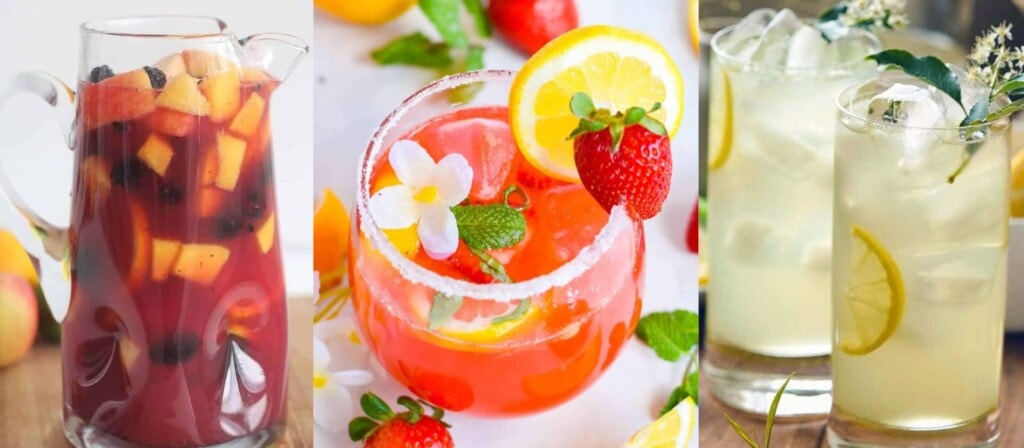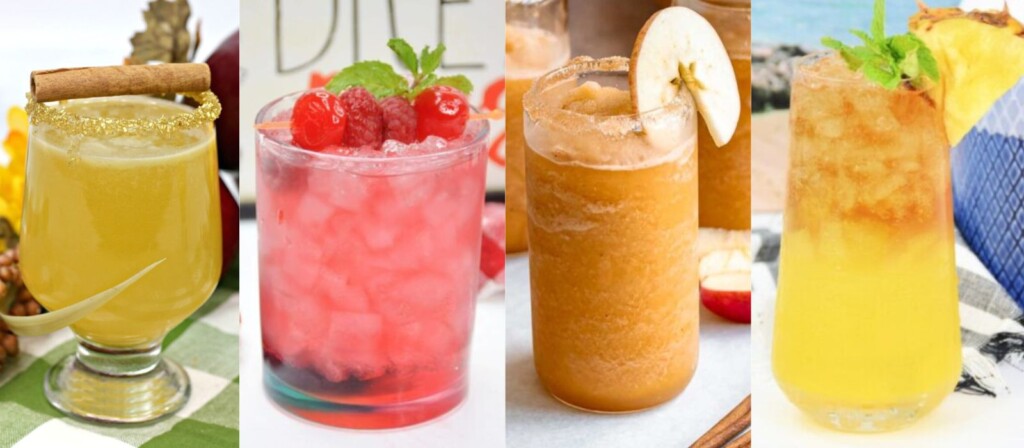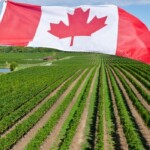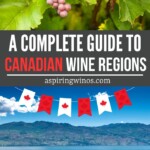Thinking of visiting Canada’s wine country or looking for some new wine varieties to try? Here’s our guide to Canadian wine, including popular wine regions, best varieties, and a bit about Canadian icewine too!
If you ask any aspiring wino to name their top 5 favorite wine producing countries, it’s likely that Canada won’t feature on that list. Canada isn’t exactly steeped in winemaking tradition. Any semblance of a wine industry was beset with challenges from the 1840’s onwards as traditional Vitis vinifera plantations (the species of vine that almost all wine today comes from) met with limited success and Vitis labrusca produced wines that were deemed inferior to its European counterparts.
Throw in Prohibition which was sandwiched between two world wars, and a moratorium on the issuing of new winery licenses that wasn’t relaxed until 1974 and it’s easy to see why Canada wouldn’t appear on many top 5’s!
Canadian Wine for Dummies
But things have changed dramatically over the last forty years with the popularity of Canadian wine skyrocketing. In this brief guide we want to put the spotlight firmly on Canada and its wine producing regions. We will discuss the rise of table wine, sparkling wine production and we’ll also explore Canada’s secret weapon, Icewine. For each region we will give you a few examples of wines to try at reasonable prices to start you on your wine journey too.
1988 was a good year for the Canadian Wine Industry. A free-trade agreement with the US was followed by the founding of the VQA (Vintners Quality Alliance) which helped hold wine producers to account, eventually eliminating the dreaded “Cellared in Canada” indicator that hindered the industry. Producers also accessed subsidies that allowed them to replace old labrusca species with vinifera hybrids, greatly increasing the quality of the wines produced.
Today, the industry is on an upward curve with over 600 wineries covering approximately 12,500 hectares. Due to the climate, only the hardiest grapes can survive so expect to see a lot of Pinot Noir, Merlot, Cabernet Franc, Riesling, Chardonnay and Seyval Blanc. The most prominent wine producing regions are British Columbia, Nova Scotia, Ontario and Quebec, each with their own preferred grape varieties that offer a myriad of flavors.
In 2017, Canada exported over two million liters of wine that was worth approximately C$40 million to the economy and, whilst that may seem small in comparison to other countries, exports are on the rise.
But we can’t talk about Canada’s burgeoning wine industry without highlighting its secret weapon. A style so good that Canada is already seen as the world’s most renown producer even though the industry is in its infancy. That style is Icewine.
What is Canadian Icewine?

Icewine is a type of dessert wine which is often produced from Riesling, Gewurztraminer, Cabernet Franc or Vidal grape varieties. Icewine produces concentrated fruit flavors, will have a full body and a lower alcohol content. It will also be acidic and very sweet.
Canada is the world’s leading producer of Icewine. In fact, Canada produces so much that it produces more Icewine than all of the other countries put together! Ontario is the key producer where over 90% of the entire countries volume is produced though you can find examples across other regions in Canada. Examples can also be found in Germany (known as Eiswein), Austria and the US but because winter temperatures vary greatly in these countries each year, they can’t produce Icewine that’s consistently as good a quality as Canada’s.
How is Canadian Icewine Made?
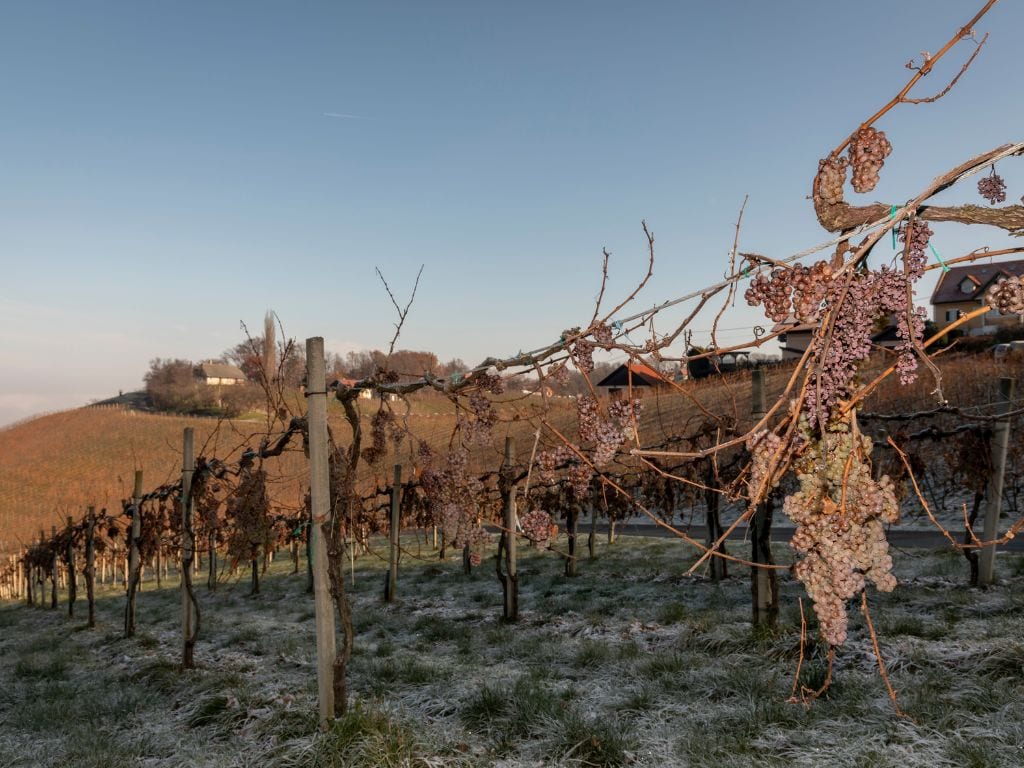
It’s a rather simple process and one that owes a lot to Canada’s climate. It’s considered a late harvest wine where the grapes are left to freeze on the vine throughout the winter months. Though the grapes themselves freeze, the sugars inside do not which allows the concentrated sweetness and flavors to develop.
The grapes will be harvested frozen so that the ice crystals that have developed can be separated from the sugars which leaves behind a concentrated syrup. Winemakers will also avoid using processes that could mask the fruit-forward nature of Icewine so there will never be any oak ageing for example. It’s also not subjected to any fungus or disease such as noble rot which completely sets it apart from its cousins Sauternes and Tokaji.
Canadian Wine Regions
British Columbia

British Columbia (or BC) lies on the Pacific Coast of Canada and is larger than both France and Germany combined! It is separated into a number of smaller Designated Viticultural Areas or DVA’s, the largest being Okanagan Valley with approximately 200 wineries covering this vast area. Okanagan’s climate is comparable to Napa and the area lies in a rain shadow protected by two mountain regions. This means that average rainfall remains low throughout the year creating an arid environment. It boasts two hours a day extra sunlight than Napa on average and temperatures can exceed 40 degrees in the summer months! The nights are often cool which allows the grapes to maintain high acidity, a characteristic that runs through most Okanagan Valley wines.
A healthy mixture of varieties can be found across the valley and the most widely planted are:
- Merlot
- Pinot Noir
- Cabernet Franc
- Cabernet Sauvignon
- Syrah
- Chardonnay
- Riesling
- Pino Gris
- Gewurztraminer
- Sauvignon Blanc
Icewine is also produced here but in very low quantities.
Whilst Okanagan Valley dominates the region, you will also find outstanding wines coming out of Vancouver Island, Fraser Valley and Similkameen Valley among others.
The finest Merlot from Okanagan will offer plenty of black fruits such as plums and blackcurrant combined with flavors of oak, vanilla, cigar box and earth. Pinot Noir will offer similar earthy and smoky flavors but will be slightly more red fruit forward with cherries and red currants often being prominent.
With whites such as Chardonnay then expect apples, pear and gooseberry to be prominent though with something like a Pinot Gris then nectarine and peach may dominate the palate with a nice crisp finish too.
Wines from BC to Try:
- Lunessence Winery & Vineyard Merlot 2018 $30-40
- Rare Bird Pinot Noir 2017 (Multi-award winner) $40-50
- Elephant Island Orchard Wines “The Other Way” Chardonnay 2018 $20-25
- Evolve Cellars Pinot Gris 2017 (Multi Canadian award winner) $20-25
Nova Scotia
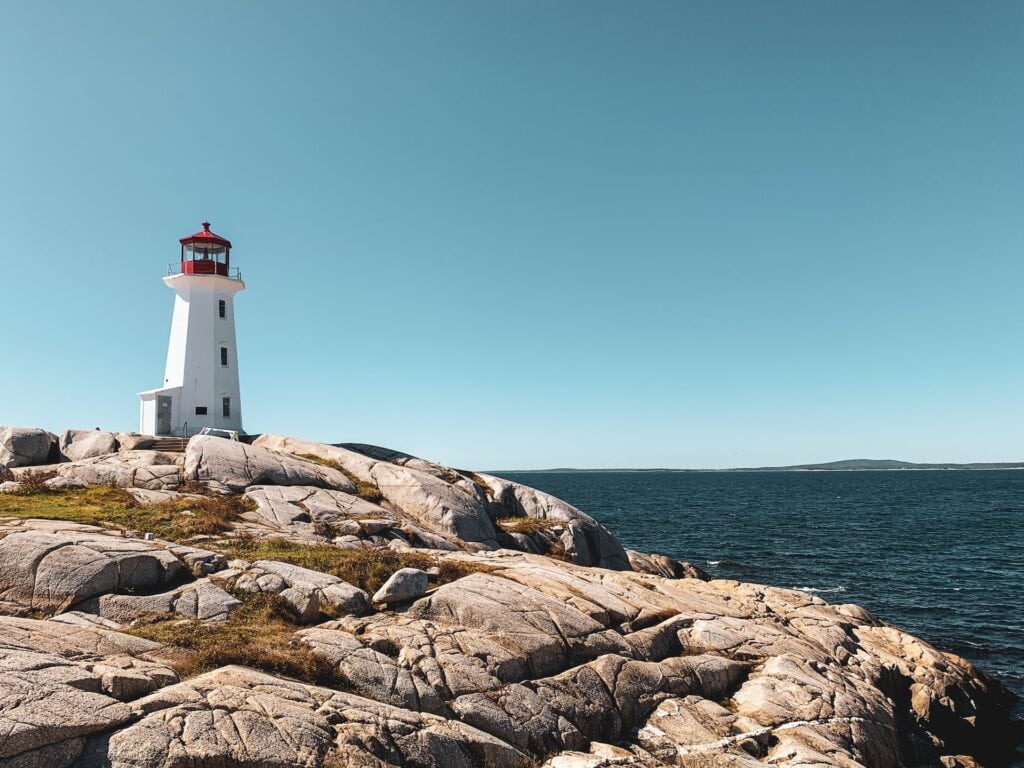
From one of the largest to one of the smallest wine regions in Canada. Nova Scotia is the epitome of the phrase “good things come in small packages”. Quality table whites and dessert wines are prevalent here though the region is most renowned for its sparkling wines for which the climate is suited. Cooling summer breezes coupled with large bodies of water that moderate the temperature and extend the growing season well into November allows a racy acidity to develop in many of the wines.
Larger producers of sparkling wine in the region such as Benjamin Bridge will use the main grapes of champagne: Chardonnay, Pinot Noir and Pinot Meunier and will make the wine using the “traditional method”, the same way that Champagne is made. The best sparklers from Benjamin Bridge will offer citrus fruits combined with racy acidity and good notes of minerality. There’ll often be a maritime flavor to the wine too!
Hybrid grape varieties thrive better here so expect to taste wines made from l’Acadie Blanc, Vidal, Ortega, Petit Milo and Seyval Blanc.
There are four primary wine regions within Nova Scotia: Annapolis Valley, Gaspereau Valley, Malagash Peninsula and South Shore. The Tidal Bay Appellation encompasses all of Nova Scotia, though there are a strict set of rules put in place by winemakers and sommeliers to ensure that only certain wines make the cut.
Tidal Bay wines must come from grapes grown completely in Nova Scotia and the alcohol content must not exceed 11% ABV. If that wasn’t stringent enough, a panel of sommeliers, grape growers and wine producers all get together every year and blind taste the wines ensuring that they are distinctly Nova Scotian. These rules ensure that Tidal Bay wines are aromatic, bursting with green & tropical fruits and offer high acidity with a touch of minerality.
It’s not all sparkling and white either, rosé and red wine production is on the rise with grape varieties and winemaking techniques allowing for red wines to be produced that are as wholesome and full bodied as Amarone!
Nova Scotia Wines to Try:
- Benjamin Bridge NV, Nova Scotia $30-40
- Benjamin Bridge Sparkling Rosé NV $30-40
- Avondale Sky Winery, Annapolis Valley Blanc de Noirs 2011 $70-80
- Luckett Vineyards Tidal Bay 2018 $20-25
Ontario
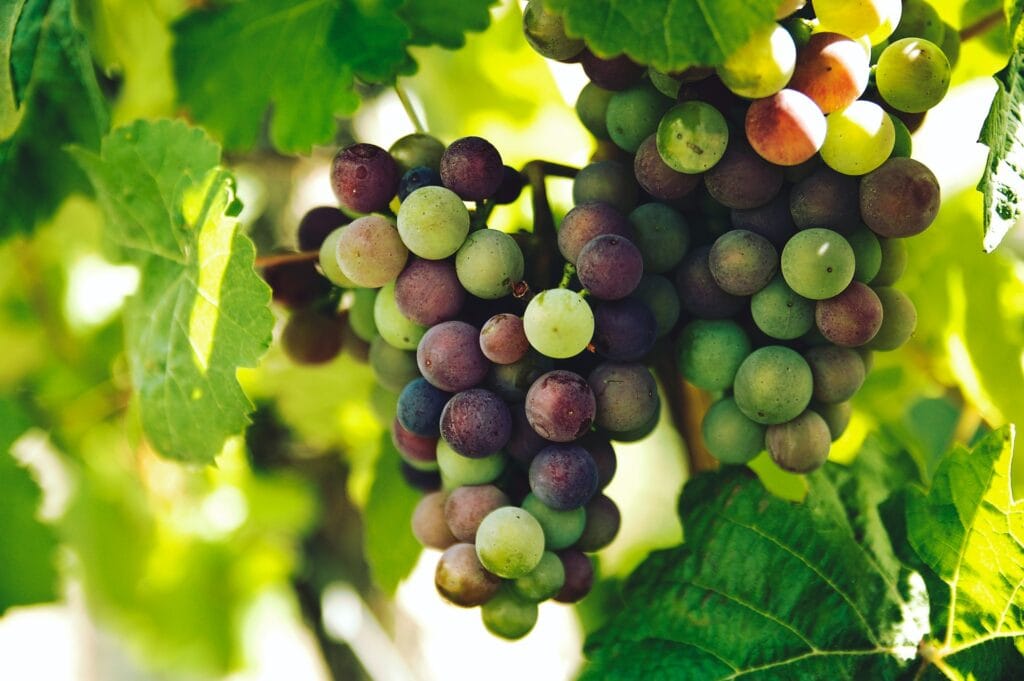
Icewine country! Over 90% of Canada’s Icewine comes from Ontario but it isn’t just a one trick pony. Ontario’s climate is relatively cool despite it lying on the same parallel as hotter regions such as Rioja in Spain and Chianti in Italy. Ontario has 3 DVA’s with the most prominent being Niagara Peninsula southwest of Lake Ontario. The lake cools down and heats up slower than the surrounding land which provides a perfect growing climate for Chardonnay, Pinot Noir, Cabernet Franc and Riesling.
Riesling is king here and can be used to make fruity dry whites and the finest examples of Icewine in Canada. Vidal is also used to produce table wine but it is much more renowned for its great quality Icewine. Chardonnay has found a good home in Niagara Peninsula with the wines often being fruit-forward with just a touch of oak ageing.
There are some fine examples of Pinot Noir from the region that offers notes of cherries and raspberry with earth and smoky notes also prevalent. Merlot, Cabernet Sauvignon and Cabernet Franc are on the rise so look out for some potential blockbusters from these varieties in the near future too!
Other regions to look out for in Ontario are Prince Edward County and Lake Erie North Shore.
Ontario Wines to Try:
- Konzelmann Estate Icewine 2018 $25-30
- Riverview Cellars Riesling Icewine 2017 $70-80
- Stanners Vineyard Pinot Noir 2017 $30-40
- Sprucewood Shores Estate, Barrel Chardonnay 2017 $20-25
Quebec

As Jacques Cartier sailed up the Saint Laurence River in the 1530’s he was amazed to see vines growing in abundance. They were so abundant that he named the region Île de Bacchus in honor of the Roman god of wine. Today, Quebec is a small but growing wine region, noted for its dry, sweet and sparkling wines. You can even find some fortified wine here too.
Quebec’s climate is harsh and most traditional European grape varieties struggle to survive the long winters. Because of this, expect to find red wines made from Sainte-Croix, Frontenac and Marechal Foch with white wines being made from Vidal, Riesling, Seyval Blanc and l’Acadie Blanc.
Quebec consists of six regions where grapes are grown. These are Basses Laurentides, Centre-du-Quebec, Eastern Townships, Lanaudiere, Monteregie and Quebec.
Quebec’s reds will often display notes of cherries, cranberry and raspberry, be medium bodied and may have hints of oak ageing. The whites will often display notes of apples, pear and citrus fruit with the Rieslings displaying aromas of flint and beeswax. The sparkling wines will display notes of green fruits but also expect some tropical fruit mixed with lots of fizz and racy acidity too.
Quebec Wines to Try:
- Coteau Rougemont, Le Grand Coteau, 2016 $20-25
- Coteau Rougemont, Vidal Reserve 2017 $20-25
- Coteau Rougemont Bulles Versant Blanc NV $18-23
Is Canadian Wine Any Good?
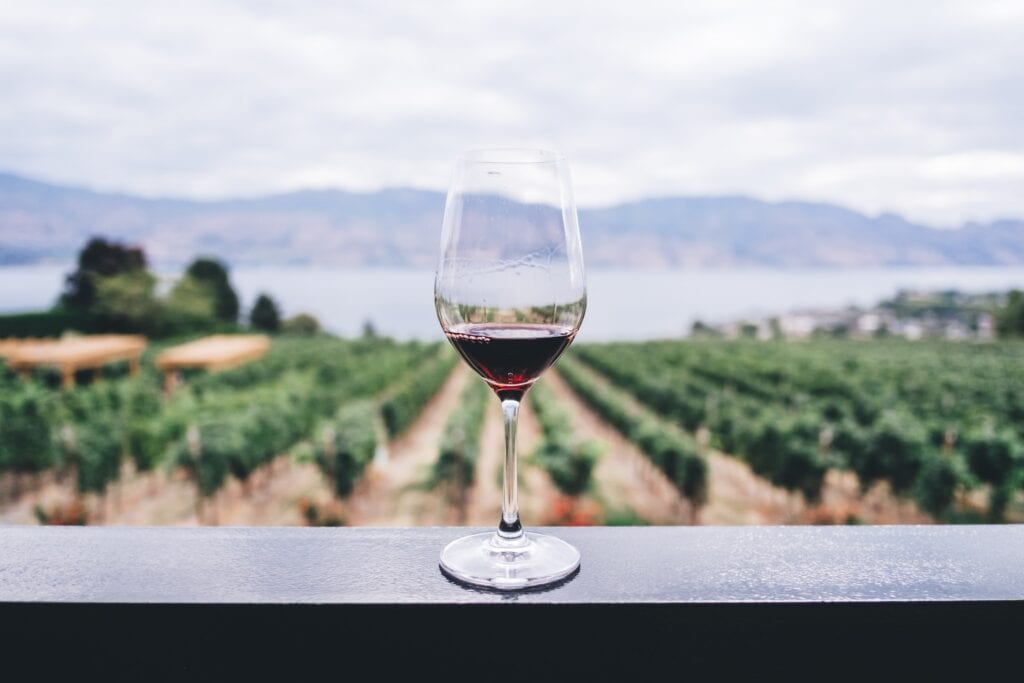
Well, as with most things, that’s a matter of opinion! However, you can’t deny that the popularity of Canadian wine is on the rise across the world. Canada boasts numerous award winners too, with the first major winner being Inniskillin Vidal Icewine 1989 which scooped the Grand Prix d’Honneur at the 1991 VinExpo competition in Bordeaux. The awards have streamed steadily in ever since and as recently as 2018, Cedar Creek was wowing judges at the InterVin International Wine wards when it scooped up the “World’s Best Semi-Dry Riesling Trophy” with its 2018 Estate Riesling, beating off challenges from more established Riesling producers in Germany, Austria and Australia. Its Syrah even scooped up an award.
Both Inniskillin and Mission Hill Icewines (2003 and 2004 respectively) are mentioned in the “1001 Wines You Must Try Before You Die” with contributor Stuart George saying of the Mission Hill “It is almost cloying at first, but the acidity is pronounced on the finish, leaving a clean, refreshing aftertaste”.
Even as I write this article, I’ve got a bottle of La Stella Maestoso Merlot 2016 from Okanagan Valley sitting pride of place on my wine rack. Its tasting profile reads exactly like the best Bordeaux wines and I can’t bring myself to open it as there isn’t an occasion special enough. It’s even ranked among the top 1% of wines in the world from the Vivino community so I know I’m going to be drinking classy wine!
But don’t take our word for it, why not grab one of our affordable recommendations, many of which are national and international award winners, and see how good Canadian wine is for yourself. I guarantee you’re not going to be disappointed.
Are there any recommendations I may have missed? Let me know in the comments below and, as always, be sure to drink your Canadian wine responsibly.



